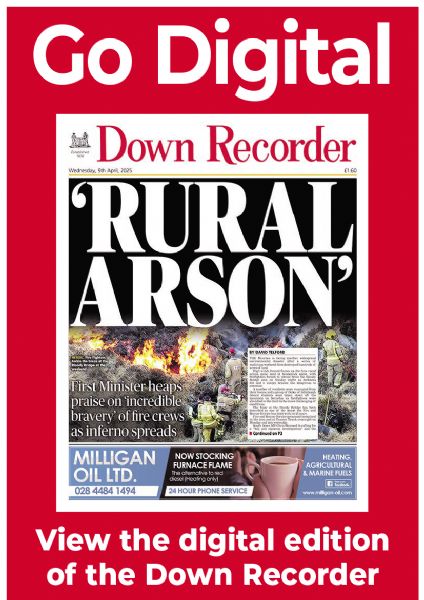Warning to drone users after chopper near miss
Warning to drone users after chopper near miss
28 May 2025

DRONE operators are being advised to familiarise themselves with the legislation governing their operation.
The warning comes after a drone came perilously close to a search and rescue helicopter in Newcastle three weeks ago.
The Donard Park incident sparked a police warning that the operator of the drone could face a criminal prosecution.
Only the quick thinking actions of a police officer who spotted the drone and a member of the local Coastguard— who alerted the crew that the drone was in the sky as they had started to lift off — averted a major catastrophe.
The incident shocked members of the emergency services but, chillingly, it has emerged that what happened was not a one off.
It was also confirmed that there have been similar incidents over recent years with drones being flown close to search and rescue helicopters deployed to the Mournes to assist people who sustain injuries walking in the mountains.
The PSNI has described what happened as “absolute madness” and warned that had the Prestwick-based Sikorsky Black Hawk helicopter collided with the drone, the outcome would have been “catastrophic”.
In the wake of the incident, officers have issued a regulations warning to all drone users.
Detective Superintendent Sean Fitzpatrick, from the PSNIs Air Support Unit, said with drones becoming ever more popular, he’s asking all users to familiarise themselves with legislation and regulations.
“Comprehensive guidance is available on our website, and is in line with the Air Navigation Order and Civil Aviation Authority (CAA) regulations,” he said.
“Following the recent incident in the Mourne Mountains, when a Maritime and Coastguard Agency Rescue helicopter was put in danger from a drone, I am asking drone users to adhere to the regulations in place to fly drones safely.”
Superintendent Fitzpatrick said the helicopter had successfully extracted an injured walker from the mountains and brought them to safety where they were transferred to an ambulance.
“As the helicopter prepared to lift off, a drone was spotted being flown in close proximity, putting all on board in serious danger,” he continued.
Police officers made their way to the site where the drone had been seen but the operator had left the area.
Detective Superintendent Fitzpatrick said legislation governing the use of drones exists to ensure safety and essentially drones should not pose any risk, either to aircrafts or people.
“Accordingly, drones must not be flown near any airport, flight path or aircraft and must not be flown near or over the public,” he said.
“They must also not be flown in any manner that could hamper emergency services when they are responding to an emergency incident.”
The Mourne Mountain Rescue Team said it has enough to deal with, without incidents of drones being flown close to helicopters deployed to the area to assist walkers and climbers.
“It’s not like we haven’t got enough to deal with on a rescue and this isn’t the first time in recent years that we’ve experienced drones being flown in close proximity to responding search and rescue aircraft,” said a rescue team spokesman.
“Luckily, the drone was spotted before the helicopter was fully airborne, otherwise the consequences of it colliding with an aircraft could have been catastrophic.”
The spokesman said the team has appealed to drone operators to never fly the devices under any circumstances if they are aware of an aircraft operating in the area, or even if a rescue is underway as a helicopter may not be far off.
Police say flying a drone close to the aircraft was in clear breach of the Air Navigation Order and may result in a criminal prosecution and have appealed for information as they bid to trace the operator.


